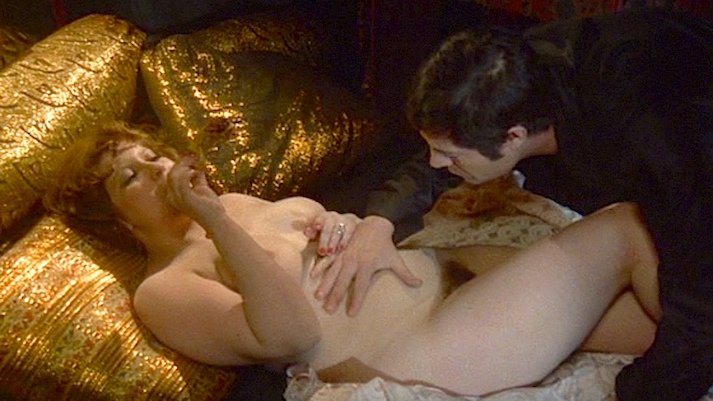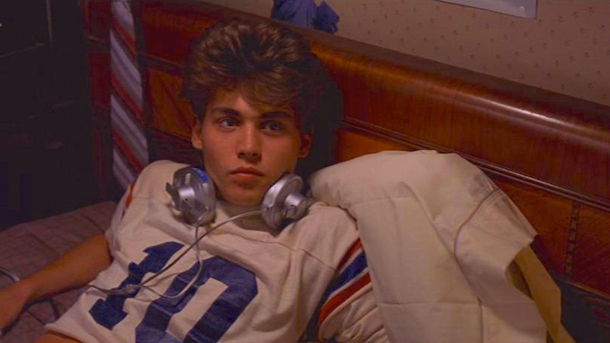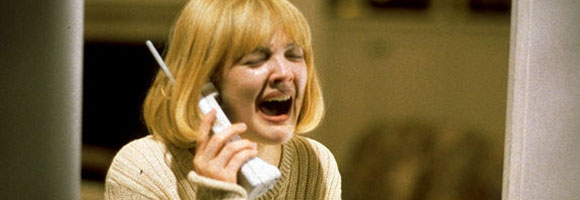I have been reading and hearing about Marco Ferreri’s notorious 1973 film, La Grande Bouffe, since adulthood.
Yet I had never had the opportunity to see it until the folks at Arrow Films saw fit to restore and release the film. Even well over 42 years since it debuted at The Cannes Film Festival, this film is still notorious. A simple “google” reveals that Ingrid Bergman tossed her cookies trying to watch it when she was sitting on The Cannes Jury. Marcello Mastroianni’s then lover, Catherine Deneuve, did not speak to him for two weeks after she saw the film. Despite some controversy, the movie was received well be most critics. In fact, Marco Ferreri tied with Jean Eustache and won Cannes’ FIPRESCI Prize. It was also nominated for The Palme d’Or. However, nearly all the positive reviews acted as a warning to the film’s admittedly grotesque use of food, bodily functions and sexuality. There was also an on-going argument in France and among cinephiles as to whether or not this film was bombastic provocation or bold metaphorical satire. Another argument centered on whether the film could be labeled as “Surrealism” or “Absurdism.”
There can be no denying that Le Grande Bouffe strikes a off-key chords of disgust and repulsion. At the same time, a viewer would be hard-pressed to argue that this strange movie fails to entertain. Most importantly, it does have something to say about the state of society that remains incredibly valid all these years later.

Marcello Mastroianni, Ugo Tognazzi, Philippe Noiret and Michel Piccoli play friends who have grown bored with life, but they have a plan!
La Grande Bouffe
Marco Ferreri, 1973
Cinematography | Mario Vulpiani
Gathering a spectacular cast of mid-1970’s actors (Marcello Mastroianni, Michel Piccoli, Philippe Noiret and Ugo Tognhzzi) together as a group of wealthy men who have lost the desire to live. More to the point, wealthy men who have allowed respective desires to form the focal point of life. And desire alone is certainly not a healthy or sustaining “diet.” This of course ties into the metaphor of consumerism.
As a successful and renowned chef, Ugo Tognhzzi, has spent his life perfecting his dishes to the point that he no longer finds joy in the making or the eating of food. Michel Piccoli is a successful television producer and journalist who seems to have lost interest in what he does. Philippe Noiret may be a respected and powerful judge, but his life has been spent interpreting law and handing out verdicts. Any hope for something deeper appears to have been sapped by an on-going inappropriate sexual relationship with his childhood nanny. It becomes clear that this nanny has been sexually abusing him since he was a child. Sexuality and intimacy clearly lead Philippe to muted place of discomfort. Most explored is the dilemma facing Marcello Mastroianni’s character.

It is Marcello who insists on hiring some prostitutes to join the friends for “the fun.” With a hooker’s panty as an eye patch — Let the eating and fornication begin!
Marcello Mastroianni
La Grande Bouffe
Marco Ferreri, 1973
Cinematography | Mario Vulpiani
A successful airline pilot, this man focuses all energy on pursuing sexual conquests and resulting pleasures. Sex is of utmost importance to Marcello, but it has become a hallow experience which seems to be heading the way of impotence.
These four friends gather with the plan to fully indulge in a hedonistic series of feasts with the goal of literally eating themselves to death. Enter an idea of “Surrealism” which is not really accurate. While it might be very hard, in theory an individual could eat him/herself to death. Yes, it might be very difficult but it can be done. The film’s core plot is less Surreal and more Absurdist. Le Grande Bouffe is also satire at it’s most dark and revolting. The film is very focused on the human body and digestion.

Ah, delicious!
Michel Piccoli examines the head of a newly butchered hog.
La Grande Bouffe
Marco Ferreri, 1973
Cinematography | Mario Vulpiani
Quite literal in its use of The Scatacological, The Big Feast is filled with fart sound effects, swelling bellies, burbs, vomiting, exploding toilets, plumbing and colon ruptures. Uncontrolled defecation and farting are less funny when presented so graphically and for so long. In many ways Ferreri is testing his audiences’ patience and will to make it through his movie.
Mastroianni’s character’s life focus is sex. As soon as the men settle in to the ornate house where they plan to kill themselves, he decides he must have sex or the “fun” of gorging themselves to death will not be as rewarding. Enter the prostitutes and the friends’ mutually shared view of women as objects.

Appreciating the nude art on the grounds…
La Grande Bouffe
Marco Ferreri, 1973
Cinematography | Mario Vulpiani
These men have essentially no real healthy connection to women. They are playthings with very little else to offer. Marco Ferreri has cast some truly beautiful actresses as the film’s prostitutes. It is hard to know if any of these actors can act because they are given very little to do other than to offer their bodies to the men. Of course, we are never allowed to forget that this is not “fun” for the women. They are there for the money. It is interesting to note that it the prostitutes who quickly grasp what is going on amongst these friends. These women have no concern regarding their clients’ macabre plan. They just want to be paid.
Late 1960’s/Early 1970’s Euro-Sex Symbol, Solange Blondeau, is given the most to do and she does it well. Disgusted by the amount of food she sees, she voices complaint at the lunacy because she is almost ill just watching the eating not out of any concern. She and another prostitute briefly discuss the unimportance of men. Solange goes along for the ride.

“What is that?”
Marcello seems more interested in the manifold as phallus and food than Solange’s beauty.
Mastroianni, Blondeau and intrusive manifold…
Le Grande Bouffe
Marco Ferreri, 1973
Cinematography | Mario Vulpiani
When Marcello brings her into the garage to show her a beautiful antique car, she is less annoyed by his use of a manifold as phallus than she is by the food he forces her to eat. The scene is intentionally gross. There is nothing erotic here. But there is another invited guest to these friends’ Nihilistic big feasts, a seemingly “proper” elementary school teacher. This was Andrea Ferreol’s film debut. She is positively brilliant in this film and offers an interestingly odd twist to the tale.
It may not be clear if the teacher understands, but there is nothing “appropriate” or remotely innocent about her. She quickly seduces Philippe’s judge. She cleverly morphs from sweet school teacher to zaftig Sex Kitten. Not only eager to have sex with the judge, she is more than willing to serve as erotic object for all four men. Andrea Ferreol is stunningly beautiful, but not in the conventional way of the prostitutes. Interestingly, it is Andrea who Marco Ferreri attaches cinematic eroticism. It is actually only with her that he indulges in 1970’s Euro-Eroticism.

Andrea Ferreol gladly offers up her lovely body to Marcello Mastroianni. Despite her beauty and willingness to play his games, he has lost the ability to participate. The film is very clear that this is not her fault.
Andrea Ferreol & Mastroianni
La Grande Bouffe
Marco Ferreri, 1973
Cinematography | Mario Vulpiani
A pale, curvaceous and inviting bounty of flesh, Andrea is the true sexual feast for these men. Ever game for anything each man wants to try or do, Andrea is also craving the food and the sex. In one of the more darkly comic and equally disgusting scenes, Andrea forces herself on an ailing Michel. As Michel moans in pain Andrea rides hard and fast. As he submits so do his bowels. It is deeply repulsive but inexplicably funny. Later she will allow Ugo to use her shapely buttocks to form a huge tart. She also attempts to satisfy Marcello’s erotic needs with little luck. As inappropriate as everything is, there is something to be said about the fact that Ferreri celebrates Andrea’s body rather than make fun of it.
However, there is something sinister about Andrea. Aside from the fact that she is not bothered by the sight, sounds, smells of stomach-churning bodily functions — she is ever eating though never to the point of the extreme as her hosts. She is also forever wanting to sex it up. Most disturbingly, she seems to take great joy in assisting these men in their pursuit of death by gluttony. She begins to take a sort of psychopathic joy in it. Andrea is fully committed to assisting these men on their mission. Andrea Ferreol is easily the best performance in the film. And it is completely fearless.
Suffice to say, this is a very strange movie. It is also almost epic in length. It runs over two hours. This is a long film. It is certainly not for everyone. However, there is a great deal that is worthy here.
While there is most certainly a societal commentary being expressed, in the end friendship and shared sadness seem to be almost as essential as the societal aspects. Amidst all the folly and nauseating actions, the filmmaker succeeds in demonstrating the love shared by these four men. Ultimately, they stand united. A very wrong and warped idea emerges that despite all of their faults, these four men have each other. It is an unexpected bit of human tenderness that manages to surface. No matter how one wants to find meaning, this film is well made, provocative, energetic and crudely funny.
Somehow Marco Ferreri film makes us actually care about these sad men. That in of itself is a major feat.

Uh, oh. A colon rupture! Um, yes. It is shown.
La Grande Bouffe
Marco Ferreri, 1973
Cinematography | Mario Vulpiani
If I had to offer an easy summary of this early 1970’s film it would be to imagine Peter Greenaway’s The Cook, the Thief, His Wife & Her Lover as an obvious comedy and minus vengeance. Actually, I’d be willing to bet that Greenaway’s film would not exist had Ferreri’s film never been made. There are a number of similarities. Greenaway had already cast Andrea Ferreol in his earlier brilliant film, A Zed and Two Noughts. Interestingly, Greenaway’s NC-17 film had an easier time in the late 1980’s than Ferreri’s film in the early 1970’s. The film was heavily censored and even banned. Locating a full cut of this film has been difficult until Arrow Films’ recent restoration.

Food, Sex & Human Cruelty
The Cook, the Thief, His Wife & Her Lover
Peter Greenaway, 1989
Cinematography | Sacha Vierny
Of course, Greenaway had a far more crucial political satire in mind at the time he made The Cook. While Marco Ferreri’s societal commentary is aimed at consumerism and the vacancy of wealthy men, Peter Greenaway was intellectually crafting a gut-punching critique of Thatcher’s England the human cruelty that resulted within it. It is the better film, but in many ways it is even harder to watch.
Michael Nyman’s iconic musical score for this infamous 1989 film. It is a major player in Greenaway’s film. La Grande Bouffe also offers a surprising importance on it’s musical score. And the score is totally mis-matched to our perceptions of what we anticipate in the way of a musical film score. Philippe Sarde composed a truly lovely score for the twisted La Grande Bouffe. It is music of bittersweet lush romanticism.
Interestingly, Sarde’s score makes sense.

“Why eat when there is no hunger?”
Michel Piccoli & Solange Blondeau
La Grande Bouffe
Marco Ferreri, 1973
Cinematography | Mario Vulpiani
And here lies the major challenge of La Grande Bouffe: Is the ‘pay-off‘ worth the investment of time to watch it?
Yes and no. I think the answer to this question can only be answered on an individual basis. Despite the unpleasantness, I think this is a well-crafted and important film. That being stated, approach with caution. It is rare that I agree with the MPAA, but La Grande Bouffe is deserving of the “NC-17” rating that it has been assigned.
And a tip of the hat to Arrow Films of the UK as they continue to raise their bar on restoration and distribution beyond region restrictions.
Their job is every bit on par with The Criterion Collection. I suspect that we are going to see an interesting turn in the world of Art House Boutique Labels as Arrow Films continues to have a more current perspective on Film Art while The Criterion Collection seems to be continuing to lose touch with their younger audiences’ cinematic interests. Do not mis-read me. TCC is going nowhere, but their recent choices for film restoration/distribution have been more than a little off. Arrow Films seems to be taking appropriate aim at Film Art that appeals to a growing population of younger cinephiles who have interest beyond the Film Masters.
Matty Stanfield, 11.5.15
















